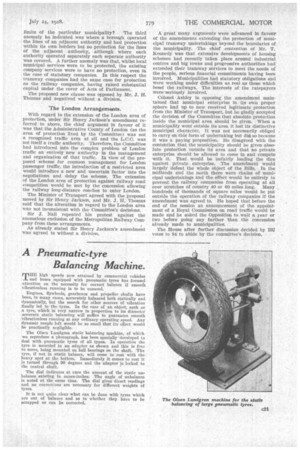A Pneumatic-tyre
Page 53

If you've noticed an error in this article please click here to report it so we can fix it.
Balancing Machine.
THE high speeds now attained by commercial vehicles and buses equipped with pneumatic tyres has focused attention on the necessity for correct balance if smooth vibrationless running is to be ensured.
Engines, flywheels, gearboxes and propeller shafts have been, in many cases, accurately balanced both statically and dynamically, but the search for other sources of vibration finally led to the tyres. In the case of an object, such as a tyre, which is very narrow in proportion to its diameter accurate static balancing will suffice to guarantee smooth vibrationless running at any ordinary operating speed. Any dynamic couple left would be so small that its effect would be practically negligible.
The Olsen Lundgren static balancing machine, of which we reproduce a photograph, has been specially developed to deal with pneumatic tyres of all types. In operation the tyre is mounted in an adaptor as shown and this is free to move, being mounted on ball bearings on the shaft. The tyre, if not in static balance, will come to rest with the heavy spot at the bottom. Immediately it comes to rest It is turned through 90 degrees and the adaptor is locked to the central shaft.
The dial indicates at cnce the amount of the static unbalance existing in ounce-inches. The angle of unbalance is noted at the same time. The dial gives direct readings and, no corrections are necessary for different 'weights of tyres.
It is not quite clear what can be done with tyres which are out of balance and as to whether they have to be scrapped or can be corrected.












































































































